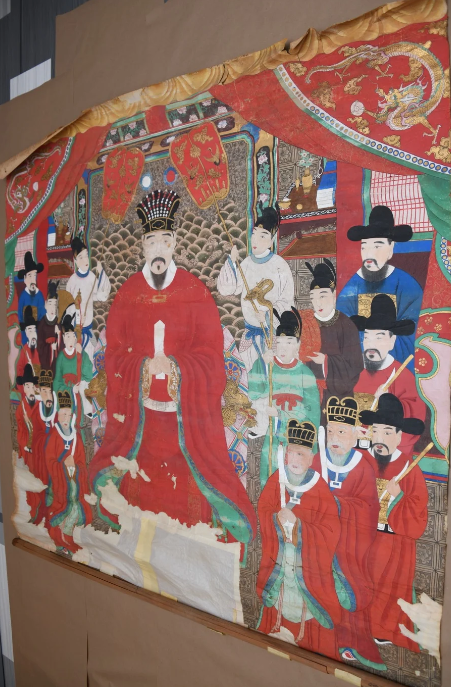Video: FBI Boston Special Agent Geoffrey Kelly, a member of the FBI Art Crime Team, describes how the FBI helped in the recovery and return of 22 artifacts believed to have been taken from Okinawa at the end of World War II. These artifacts had been missing for almost 80 years.
FBI Boston Recovers & Returns 22 Historic Artifacts to Japan
The FBI Boston Division has recovered 22 historic artifacts that were looted following the Battle of Okinawa and has orchestrated their return to the Government of Japan, Okinawa Prefecture. These artifacts had been missing for almost 80 years. A formal repatriation ceremony will be held in Japan at a later date.
In 2001, the Okinawa Prefectural Board of Education, as a result of its participation in the U.S. Department of State’s International Visitor Leadership Program, registered some of these artifacts with the FBI’s National Stolen Art File (NSAF), a database of art and cultural property that have been reported stolen to the FBI by law enforcement agencies in the U.S. and abroad.
Last year, a family (who wishes to remain anonymous) was going through their late father’s personal effects and came across what appeared to be very valuable Asian art. Their father was a World War II veteran, but never served in the Pacific Theater. In an effort to identify the provenance of the artifacts, they checked the National Stolen Art File and determined that at least four of the items were missing 18th century portraits that had been listed in the database. Included with the artifacts was an unsigned, typewritten letter stating these items were collected in Okinawa during the last days of World War II.
The FBI conducted a logical investigation and was able to authenticate the artworks.
“It’s an exciting moment when you watch the scrolls unfurl in front of you and you just witness history, and you witness something that hasn’t been seen by many people in a very long time,” said Geoffrey Kelly, an FBI Boston Special Agent, and Art Crime Team member. “These artifacts are culturally significant, they’re important pieces of Japan’s identity. These were especially important because they were portraits of Okinawan kings dating back to the 18th, 19th centuries. This case really illustrates part of the work we do on the Art Crime Team. It’s not always about prosecutions and putting someone in jail. A lot of what we do is making sure stolen property gets back to its rightful owners even if it’s many generations down the road.”
The National Museum of Asian Art at the Smithsonian Institute assisted the FBI in ensuring that the artifacts were properly packaged for transport back to Japan.
“The FBI reached out, asked us for some help making sure they knew how to care for the works and that they had a safe place to store them while they worked out the repatriation details,” said Danielle Bennett, head of collections management at the National Museum of Asian Art at the Smithsonian Institute. “It’s an honor to be able to help the works go back to their home.”
The FBI also thanks the U.S. Army Civil Affairs & Psychological Operations Command (Airborne) 38 G Monuments Men and Women, the Naval Criminal Investigative Service, and the U.S. Air Force for their assistance in securing and transporting the artifacts to Okinawa Prefecture, Japan.
On Friday, March 15, 2024, Denny Tamaki, the Governor of Okinawa Prefecture, announced the return of the artifacts to the people of Okinawa, Japan, in a news conference stating “it is very meaningful that the FBI, along with others in the U.S. Government, have cooperated to realize this return.”
To learn more, you can watch this extended interview featuring FBI Boston Special Agent Geoffrey Kelly: https://www.youtube.com/watch?v=mOjeVtpUguI or https://www.fbi.gov/video-repository/boston-artifacts-kelly-031424.mp4/view
To view and download photos of the recovered artifacts, visit: https://www.fbi.gov/news/stories/fbi-boston-recovers-and-returns-22-historic-artifacts-to-okinawa-japan





